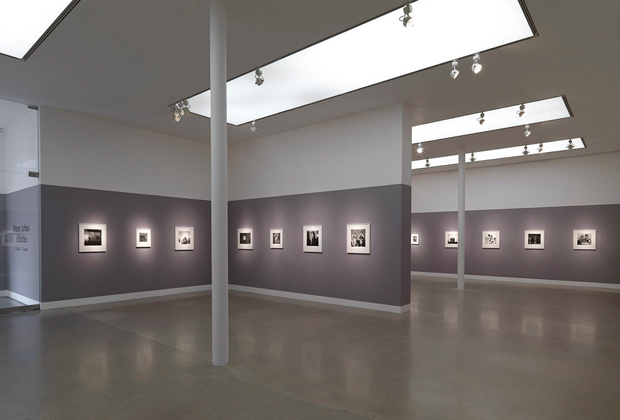
Diane Arbus in London and Berlin
Major shows with previously unseen work for the photographer who famously said "every difference is a likeness"
In 1969, a couple of years before her death, American photographer Diane Arbus travelled to London to work on a photo essay she'd proposed to Nova, a now-defunct UK women's magazine. The story, a piece wonderfully titled "People Who Think They Look Like Other People," led her, on a kind of tangential investigation, to the great wax museum Madam Tussaud's, into which she was granted rare access. "I got permission to go there at night when it was empty," she wrote in a letter to her daughter, Amy. "I touched some of them."
A couple of the pictures Arbus took while roaming those dark doppelgänger-filled corridors are now on show at London's Timothy Taylor gallery as a part of a new exhibition that brings together 32 photographs linked thematically by Arbus' career-long exploration into notions of affinity. Other images taken for the same Nova piece are on display nearby, including a couple of uncanny look-alike portraits (of Winston Churchill and Elizabeth Taylor), whose subjects were discovered after the magazine placed ads in The Times and The Evening Standard calling for people who believed themselves to be the spitting image of someone well known. "If you think you are the double of someone famous," the advertisements read, somewhat cryptically, "you could be famous too.
The rest of the show (the bulk, in fact) consists of a wonderful mix of black and white portraits taken throughout the master photographer's career, all dealing with notions of likeness. Many of Arbus' most famous pictures might have warranted inclusion (think of all those identical twins!), but on show here are examples of her lesser-known work, including seven images never before exhibited in the UK. In one portrait a middle-aged couple sit side by side in grand, ceremonial get-up, hilariously out of place in their everyday domestic setting; in another, a blind couple perch together in their bedroom in Queens, New York, their similarities clearly visible. Bonds and allegiances are on show throughout, but it's not just obvious likenesses Arbus captures.
"Every difference is a likeness too," the photographer once said, going some way to explaining this particular body of work. "There are associations, groups, clubs, alliances, milieus for every one of them. And each milieu is a small world, a subculture with a slightly other set of rules for the game.”
Diehard Arbus fans – the sort that travel long distances to see her work in the flesh – are very much in luck this summer. The Timothy Taylor gallery is running its show in tandem with a major exhibition of the photographer's work at Berlin's Martin Gropius Bau, where over 200 images will be on display until September. "Rather than a chronological, thematic or academic aproach," says the gallery, explaining an important curatorial decision, "we have chosen to present Arbus' singularly powerful images accompanied only by the artist’s own titles so that each viewer encounters the images much as the photographer encountered her subjects: directly and unencumbered by preconceptions."